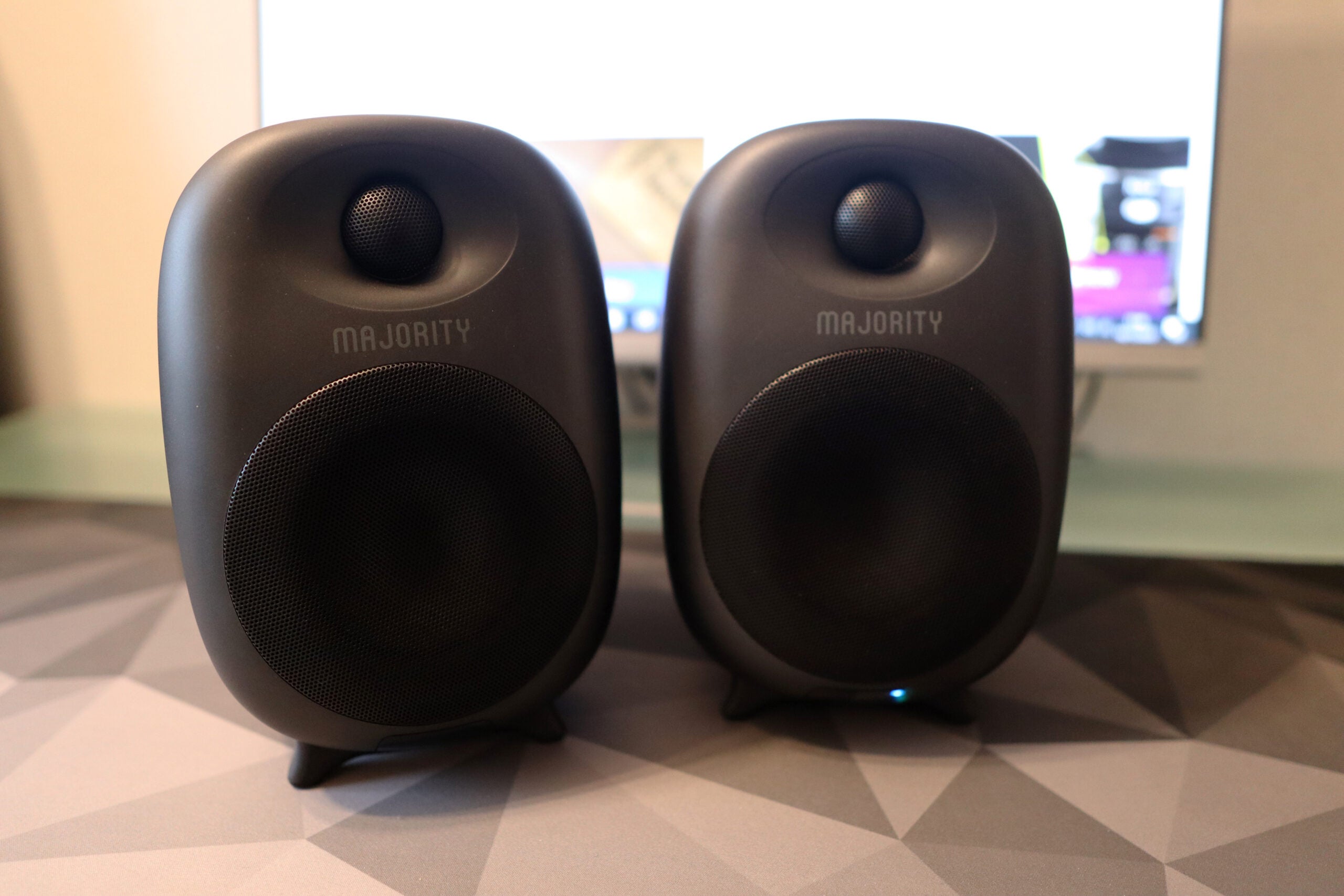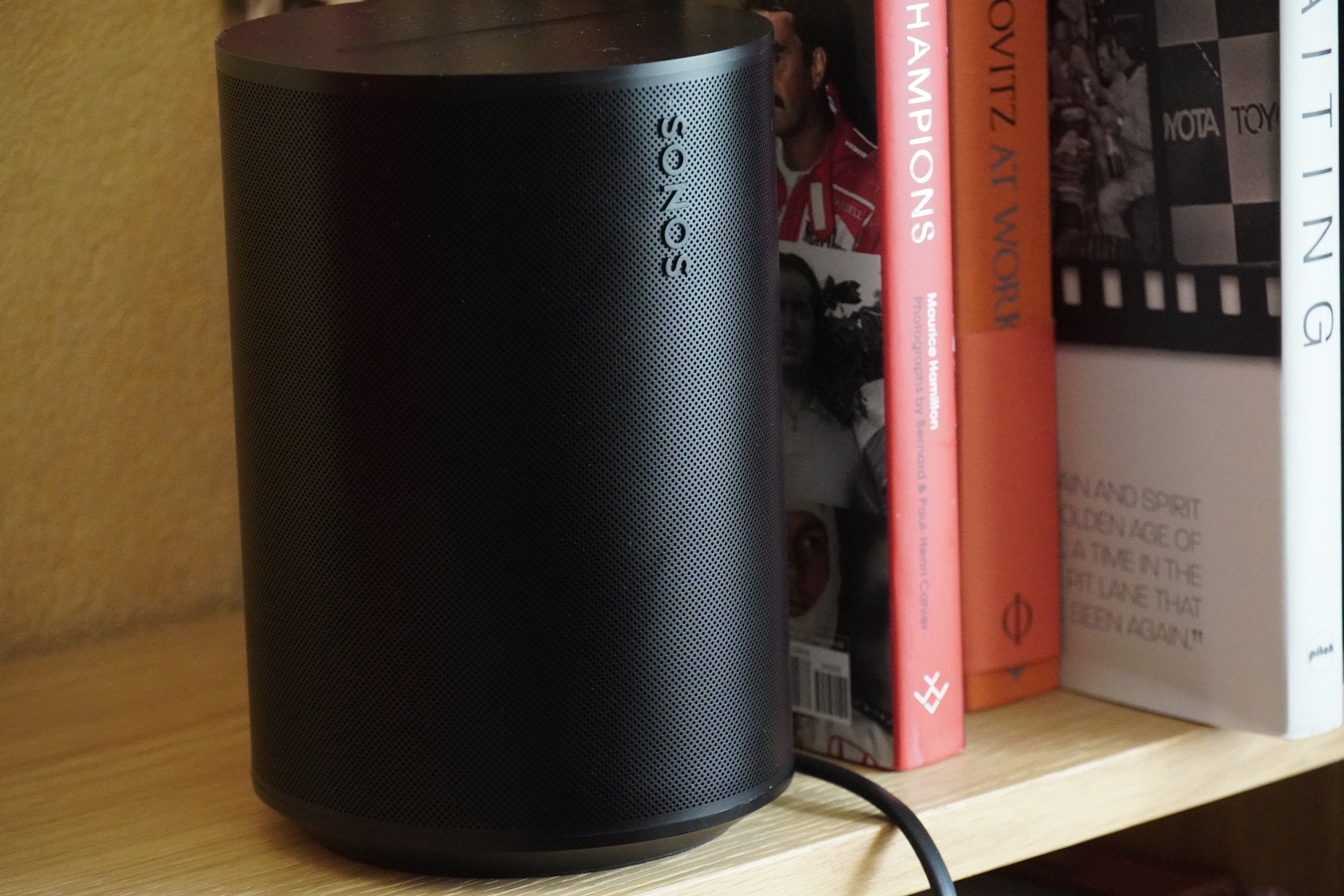iFi Uno Review
Further proof (as if any were needed) that size isn’t everything






Verdict
Small, adequately formed and with performance out of all proportion to both its asking price and its, erm, proportions, the iFi Uno is just the latest demonstration of the company’s expertise at every price-point.
Pros
- Open, articulate, and convincing sound
- Useful specification
- Small and affordable
Cons
- Doesn’t look or feel anything special
- Doesn’t thrive at very low volume…
- Or at particularly high volume, for that matter
Key Features
- ESS Sabre Hyperstream DACImproves audio while consuming less power
- Gold-plated analogue outputsTo resist corrosion and maintain conductivity over time
- File supportUp t 32-bit/385kHz, DSD256 and MQA capability
Introduction
And just when I thought that iFi had a DAC, a headphone amp, or a DAC/headphone amp combo at every price-point, here comes the Uno DAC/headphone amp.
It’s the most affordable product of its type in the iFi line-up, and it’s designed to democratise the company’s established expertise where this sort of thing is concerned yet further.
Given the number of very well-regarded alternatives you can buy for not much more than this, though, I’m bound to ask: is this one of those false economies we’ve all heard so much about?
Availability
In the United Kingdom you should expect to pay no more than £79 for the iFi Uno DAC/headphone amp. It’s an even more attention-grabbing $79 in the United States, and it goes for around AU$119 in Australia.
That’s not much money. Then again, there’s not much of the iFi Uno either. But this is by no means the only tiny USB DAC/headphone amp you can buy – everyone from Astell & Kern to THX (and iFi itself, let’s not forget) has a small, well-specified dog in this particular fight. What, then, is compelling about the Uno?
Design
- Compact size
- Lightweight
- Distinctive shape
There’s not a great deal of the iFi and it doesn’t look or feel in any way luxurious – but there’s absolutely nothing wrong with the way the iFi Uno is built or finished. The plastics used in its construction are perfectly adequate, the build quality is perfectly fine, and if the chassis flexes a little when you squeeze it, well… don’t squeeze it, then.
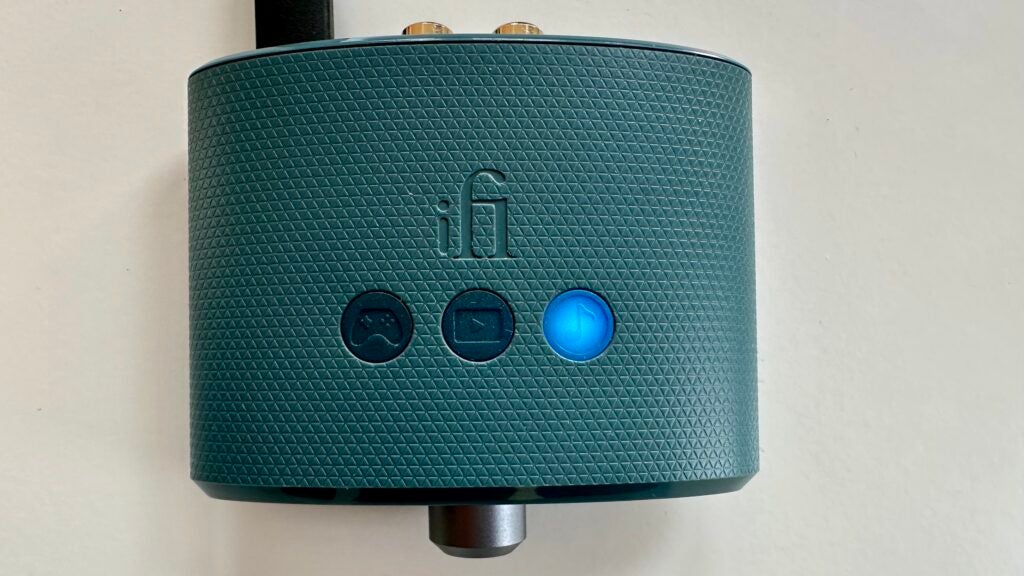
The dimensions are ideal for desktop use, and it’s not too big to slip into a pocket either (unless you favour the skinniest of skinny fits). When it’s on a surface (as opposed to in a pocket), the little feet on the bottom of the cabinet are grippy – which is handy, because otherwise the Uno is plenty light enough to be towed around by the cables it’s attached to.
And some actual design has happened here, which sets the Uno apart from the majority of its nominal competitors. The curvy, rugby ball shape is an iFi favourite, and here it makes the Uno look like a miniaturised version of one of the company’s Zen range – which I suppose it is, really.
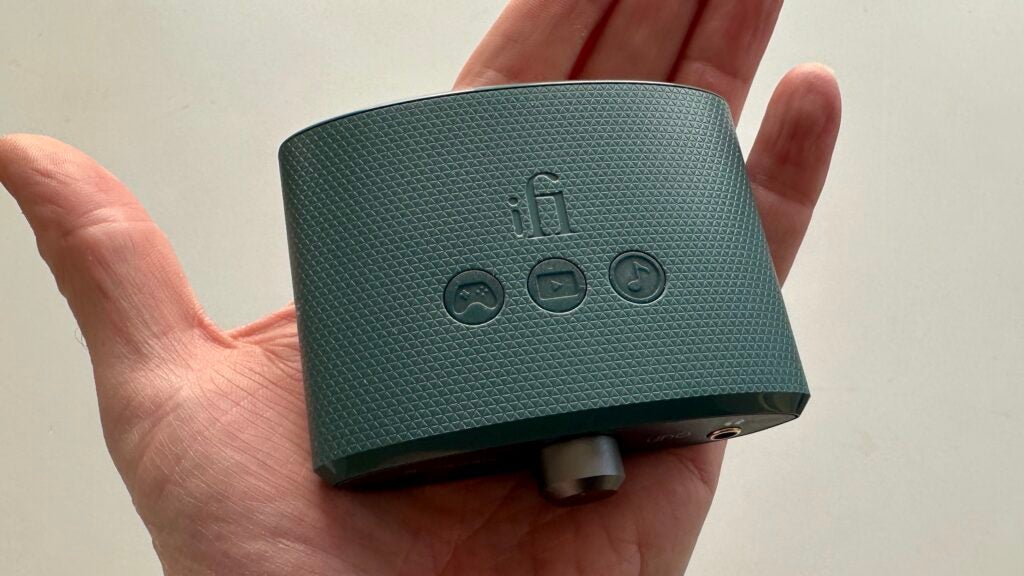
Features
- ESS Sabre Hyperstream DAC
- 32-bit/385kHz, DSD256 and MQA capability
- Gold-plated 3.5mm and stereo RCA analogue outputs
It’s only small, sure, but the Uno DAC/headphone amp is specified more thoroughly than some larger and more expensive alternatives. If iFi has cut any corners, they’re not obvious from the spec-sheet.
On the inside, the digital-to-analogue business is done by an ESS Sabre Hyperstream chipset – so there’s some DAC credibility right there. It’s capable of dealing with digital audio files of most types, up to 32-bit/384kHz, DSD256 and DXD384 – and it’s an MQA renderer too. Good luck finding a digital audio file the Uno isn’t comfortable dealing with. To add to the sensation of overspecification, iFi has deployed TDK and muRata capacitors where required.
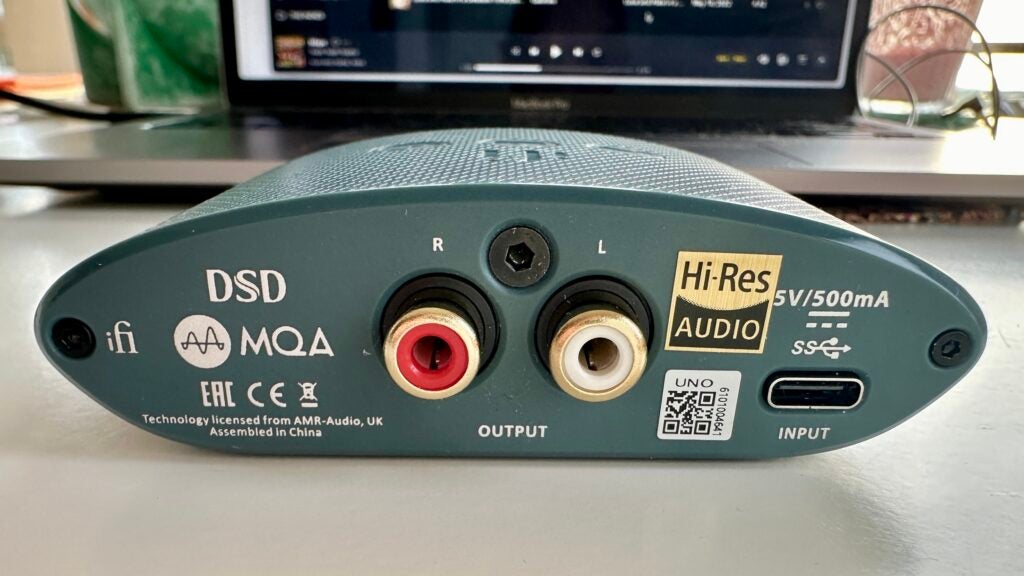
On the outside, the Uno manages to include all necessary controls, inputs and outputs – somehow without cramming them so close together that things get awkward. On the rear of the device there’s a USB-C socket, which is used both to power the Uno and for data transfer, and gold-plated stereo RCA outputs for connection to an amplifier, powered speaker, or what-have-you.
On the front, meanwhile, there’s a big dial in the centre of the fascia – well, it’s big by the standards of the Uno overall. This is your power on/off switch as well as the volume control, and it features a light around it that glows in one of five different colours to indicate the file type and size that’s currently being dealt with.
To its right there’s a gold-plated 3.5mm headphone output – it sits ahead of iFi’s S-balanced circuitry that’s designed to minimise noise and crosstalk, and it’s gold-plated in an effort to maximise conductivity and reduce the possibility of corrosion.
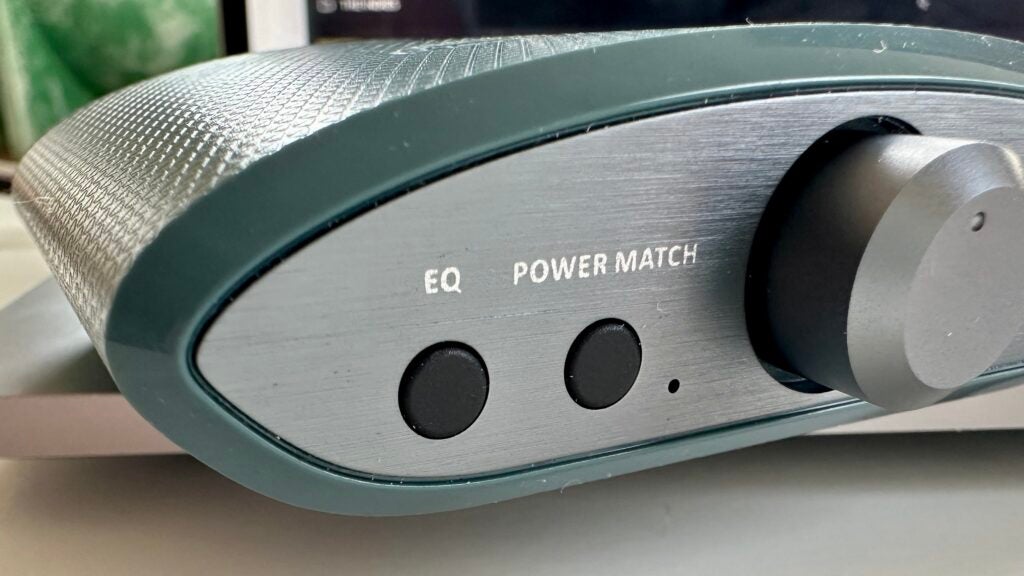
To the left there are a couple of small push/push buttons. One is labelled power match, and it cycles between two levels of gain to help when using headphones of differing sensitivities – iFi likes to call this dynamic range enhancement.
The other is labelled EQ, and it cycles through digital filters that are optimised, according to iFi, for use when gaming, watching video content or listening to music. You can tell which one is engaged by the light behind one of three (extremely indistinct) symbols on the top of the device.
Sound Quality
- Detailed, rhythmically positive, and quite articulate
- Organised and properly controlled
- Issues at both extremes of volume
Given that the Uno is specified to cope with the biggest, most information-rich file sizes around, it seems only reasonable to give it some to deal with. With a connection to an Apple MacBook Pro at one end and to a pair of Grado SR325x at the other (and with Colibri software loaded into the laptop to circumvent Apple’s antipathy to properly high-resolution audio content), I’m up and running.
A 24-bit/96kHz FLAC file of Bad Guy by Billie Eilish lets the Uno explain an awful lot about itself. It creates a large, well-organised and easy-to-follow soundstage, and locks each element of the recording in its own little pocket of space with real assurance – and it does so without any strand of the recording sounding remote or estranged.

It allows the close-mic’d vocal in the midrange plenty of elbow-room too and identifies even fine and/or transient details in the delivery with confidence. There’s intensity to Eilish’s performance, but few histrionics – and that’s just the way the iFi makes it sound.
At the bottom of the frequency range there’s good extension and plenty of detail regarding texture, as well as good control of attack and decay. This means the rhythm sounds naturalistic and there’s proper momentum to the recording, decent punch, and proper substance. At the opposite end, treble sounds bite and shine purposefully – but they have sufficient substance to balance out the attack.
The Uno’s tonality is fairly neutral, and it’s very even-handed when it comes to frequency response – the midrange gets the spotlight, but the journey from the very bottom of the frequency range to the very top is pretty smooth and even-handed. Detail levels are high at every point, and the idea that you’re missing out on some fleeting or transient aspect of the recording seems unlikely in the extreme.

The only way to spoil what is a deeply enjoyable performance is to listen at either very low or very high volume. Listening very quietly reveals the iFi’s inability to keep the output of the left and right channels even – at super-low volume the left-channel output more-or-less disappears.
Listen at volume levels that menace your hearing, and the treble response becomes altogether too assertive – what was a latent threat of hardness and edginess becomes all too apparent. There’s an easy remedy to both shortcomings, though: don’t listen too loud (which is good advice in any circumstance) and don’t listen at levels that are barely audible in the first place.
Latest deals
Should you buy it?
You want to make a big difference to your desktop audio with a big spend
The iFi Uno can transform the ropey old sound of your laptop
You like to listen at significant volume
It doesn’t entirely lose its composure at big levels, but the Uno definitely gets uncomfortable
Final Thoughts
There’s part of me that thinks iFi is just making life difficult for itself with the Uno. After all, it offers a big helping of the performance the company charges quite a lot more money for – and not only is the Uno brilliantly affordable, it’s light and compact at the same time. Unless you’re an absolute fiend for volume, I’m not quite sure why you need to spend any more money than this…
How we test
We test every DAC we review thoroughly over an extended period of time. We use industry-standard tests to compare features properly. We’ll always tell you what we find. We never, ever, accept money to review a product.
Find out more about how we test in our ethics policy
Tested with real world use
Tested for several days
FAQs
The iFi Uno comes with three EQ modes, so as well as listening to music with the DAC, there’s also a movie and game EQ mode.


